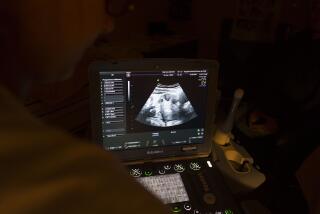Research Seeks Method to Avoid Multiple Pregnancy
If budding research efforts pan out, the problem of multiple pregnancy may be resolved in the near future.
Researchers are working on a method to allow an embryo to develop more fully before it is transferred to the uterus.
Now, several embryos usually are transferred after about three days of growth in the laboratory, when each consists of six to 10 cells. But embryos that evolve to a blastocyst (50 to 100 cells) before being implanted are thought to have a much better chance of surviving in the uterus, said Dr. Geoffrey Sher, executive medical director of the Pacific Fertility Medical Centers in San Francisco.
âWe need to get to the point of putting one embryo back into a uterus and making a baby 70% of the time,â Sher said.
Research efforts now center on creating a substance--the growth medium--in which an embryo can develop reliably to the blastocyst stage. An added benefit to the transfer of blastocysts is that it would allow accurate pre-implantation genetic testing to check for inherited diseases.






